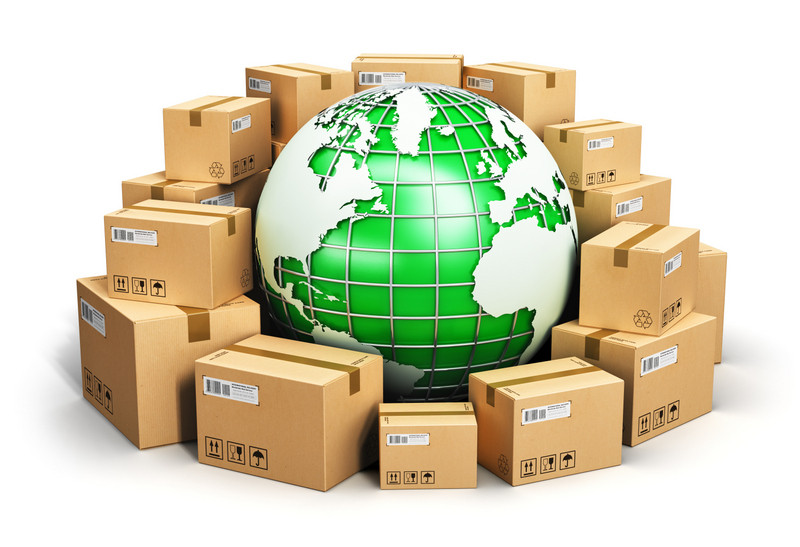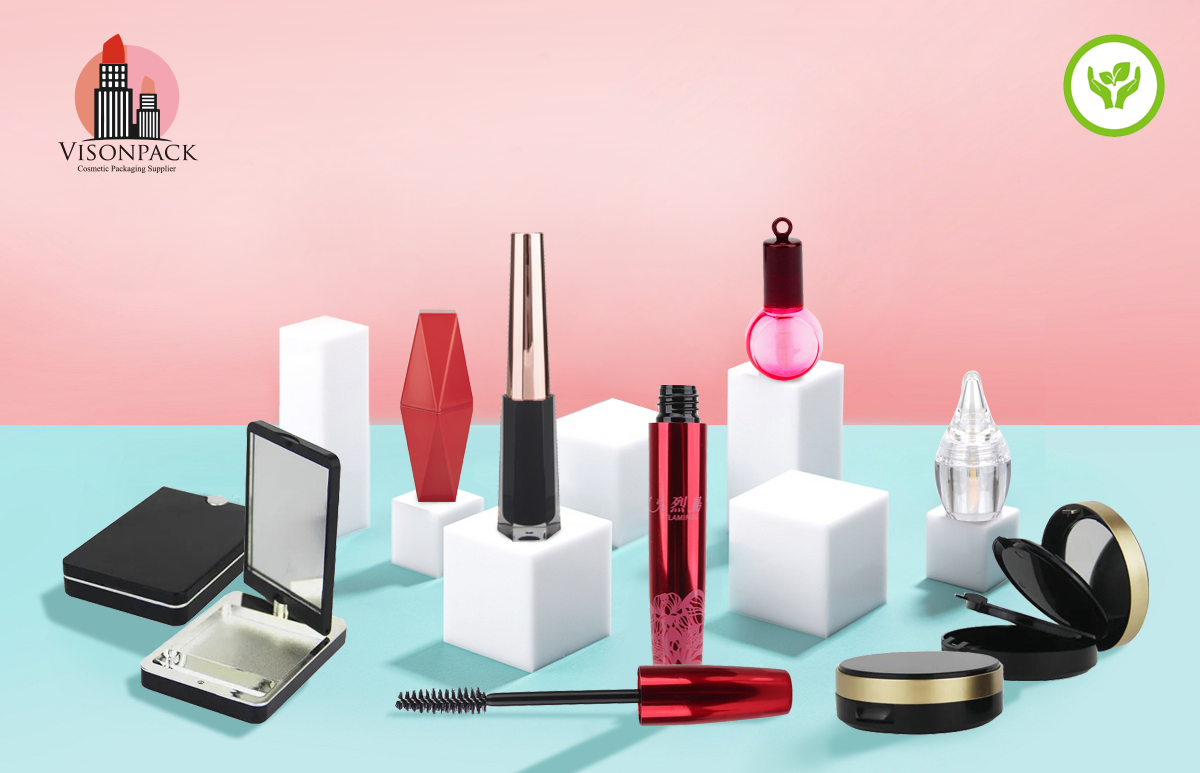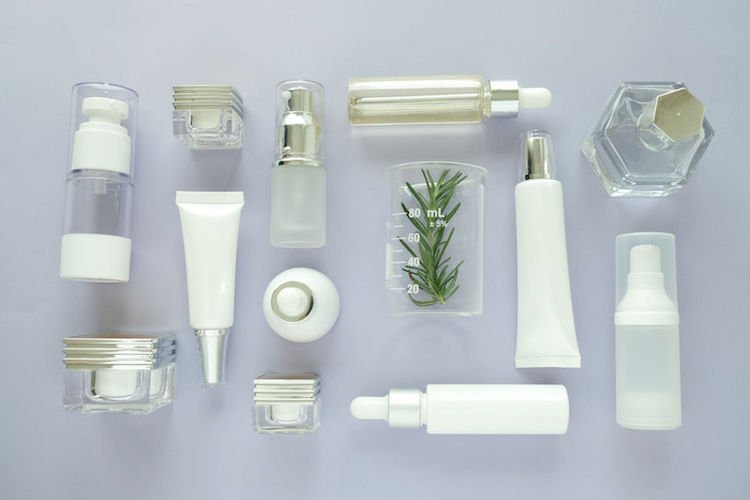The cosmetic packaging industry has been plagued by environmental problems that can go way back to the 1970s. But it was around the 2010s, that the concept of green environmental protection and “circular economy” became increasingly accepted and recognized by the young generation and also the majority of middle-class consumers. Nowadays, when buying cosmetics, whether it is eco-friendly lip gloss containers, eyeliner bottles, eyeshadow pallets, or lipstick tubes, more and more consumers pay attention to whether the packaging materials are 100% biodegradable, and what is their carbon footprint.
Sustainable packaging may look like a huge trend right now. But it is more of a revolution. The Green Revolution. So here’s how your cosmetic brand can Go Green by endorsing eco-friendly cosmetic packaging. An objective that is fueled by the burgeoning popularity of sustainable packaging materials and designs produced by manufacturing companies like Visionpack.

Environmental Concerns Associated with Cosmetic Packaging
The pharmaceuticals and cosmetic industry have been notorious for their contribution to marine pollution. According to recent scientific data produced by the United Nations, over 11 tonnes of plastic waste are dumped into the oceans every year from across the world.
This means that if revolutionary steps for more conscious packaging are not taken right away, it will be rare to spot any fish in the oceans by the year 2050. A big part of this waste comes from cosmetics containers, tubes, cartons, plastic wraps, etc. A 2021 survey confirms how the global cosmetic industry produces nearly 120bilion units of packaging waste every year. The majority of this waste is not biodegradable. Many waste materials like certain nail polish containers can even be hazardous.
Choices of Raw Materials for Eco-Friendly Cosmetic Packaging
In the feats of environmental protection acts being established across several countries, the most important reflection of it is to depend on the choice of raw materials. As eco-friendly cosmetic packaging manufacturers like Visionpack gain ground with the utilities of 100% Biodegradable cosmetic packaging materials, it becomes more of a golden opportunity for cosmetic brands to find a greener packaging material substitute from such sources. Some of the common materials are listed below:
- PET-G or PETG Plastics – a variant of Thermoplastic Polyester which only started to take off in the industry in the last two years as an eco-friendly plastic that is 100% recyclable, non-gaseous, biodegradable, and ethical cosmetic packaging. Thanks to its high-tensile nature, the material is extremely flexible for customization.
- Stone Paper – is made from natural limestone and bamboo fiber. It’s A very popular material used in Chinese painting. Stone paper is perfect for film bags and packaging labels for eco-friendly eyeshadow palettes. Because stone is not a biological substance, it is not strictly biodegradable. But it is photodegradable indeed. This means, as a packaging material, stone paper can be securely disposed of in commercial compost because the paper disintegrates when heated. In compost, it dissolves similarly to an eggshell.
- Recyclable Aluminum – is often regarded as one of the world’s most environmentally friendly metals for eco-friendly lipstick tubes. Aluminum is one of the most valuable commodities in your recycling bin and ultimately the most recyclable industrial resource since it can be recycled indefinitely to manufacture the same product. As a result, this metal does not always imply a detrimental influence on the environment.

Now, what makes the above-mentioned significantly special as eco-friendly packaging materials is that they qualify for the cost-effective production of raw materials, which can be practically used by cosmetic brands, not only to save the environmental cost of packaging, but also save consumers’ expenses.
Eco-Friendly Beauty Packaging – How Environmental Protection Start from Packaging Design!
Eco-conscious packaging gives cosmetics brands an appealing brand value among customers who are interested in making environmentally conscious choices. But it is not a straightforward dialect. If skincare and cosmetics companies want to convey the concept of environmental protection to consumers, the best way is through product design. The overarching goal of sustainable packaging is to cover environmental, economical, and societal ethics altogether.
The practicalities of what is and isn’t achievable about eco-friendly beauty packaging trends are frequently compounded by the concerns of cost, formulation compatibility, graphics and imaging, durability, protectiveness, and delivery.
Moreover, the uncertainty around the availability of various sustainable packaging components is heedful. According to suppliers, one of their key roles has evolved into educating their clients on the numerous possibilities of sustainable package designing.
Ideas for Eco-Friendly Beauty Packaging
Now it is apparent that sustainable packaging can particularly benefit the beauty industry with a lot of value, for both customers and businesses trying to make a difference. Below are some ideas to get you started.
- Consistent Refillable Packaging
By encouraging customers to keep using containers by providing refill services is a great way to reduce the number of containers to reach the oceans and landfills. You can use refillable containers for hand wash, body wash, and other skincare. Refillable containers not only help minimize overproduction, but it’s also a terrific method of building customer engagement by pursuing moral values. With the increased usage of refillable skincare whenever possible, there can be an effective reduction of solid plastic wastes.
- Reduce Unnecessary Product Shell
Now if you are looking at eco-friendly lip gloss containers or eco-friendly lipstick tubes, refillable containers are not an option. But minimalist product designs are a great way to curtail the overuse of material. By using the right packaging form, it is possible to reduce the amount of product shell in your container. Reduced product shells can help keep a lid on costs and also boost sales. You could use tubes over jars to contain the same amount of product, which would save money because tubes are usually cheaper than jars.
- Avoid Excess Product Seeding
Product seeding is a tactic that’s used by companies to get their products into the hands of consumers for free. It may work for some, but it can also backfire spectacularly. What if your selected customer does not need the product? What if the product expires before use and is thrown away? Such a waste isn’t it? So choose wisely.

So this brings us to a closure, where it is evident that sustainability is not only a trend but a necessity for the beauty industry, to purge itself from the years of condemnation for producing tons of hazardous waste.
Back to You
Beauty brands should find confidence in advocating environmental protection and encourage consumers to adopt alternative packaging. It’s been well established that consumers are willing to pay a premium for products with a socially conscious label.
Recent data from The NPD Group shows that 61% of all consumers would be willing to pay more for eco-friendly packaging in their beauty products than they currently do. It is high time for cosmetic brands to pay attention to environmental protection and choose their packaging components wisely to impart more green product life cycles.